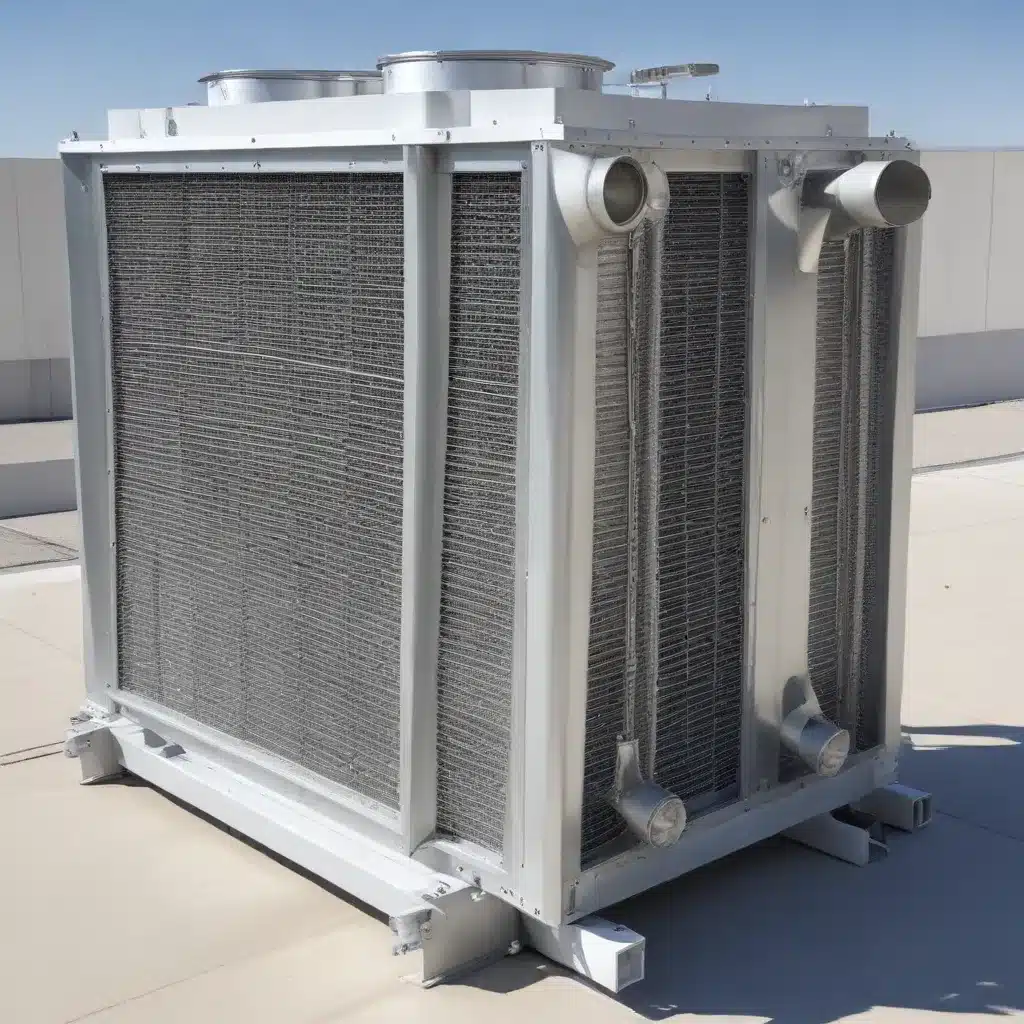
The Evolving Landscape of Air-Cooled Heat Exchangers
In the rapidly evolving world of renewable energy, the role of air-cooled heat exchangers (ACHEs) has become increasingly crucial. As industries strive to enhance their environmental sustainability and operational efficiency, these heat transfer devices have emerged as pivotal components, enabling innovative solutions across a wide range of applications.
At the forefront of this transformation, advancements in ACHE design and engineering are paving the way for enhanced performance, improved energy savings, and reduced environmental impact. By delving into the latest research, technological developments, and industry insights, we can uncover practical strategies for optimizing ACHE systems in renewable energy applications, ultimately contributing to a more sustainable future.
Enhancing ACHE Efficiency for Renewable Energy Systems
One of the primary drivers behind the growing importance of air-cooled heat exchangers in renewable energy is their ability to improve overall system efficiency. As the demand for clean energy sources continues to rise, the need for highly efficient heat transfer solutions has become paramount.
A recent study published in the Journal of Building Engineering revealed that the U.S. Department of Energy (DOE) has allocated $46 million in funding for 29 projects focused on developing advanced technologies and retrofit practices for buildings. These initiatives aim to enhance energy efficiency, demand flexibility, and sustainable operation, with a particular emphasis on HVAC and water heating systems – areas where air-cooled heat exchangers play a crucial role.
One of the key focus areas within this funding opportunity is the development of “Components R&D for Residential and Commercial HVAC/WH Air-Source Heat Pump” systems. By investing in innovative ACHE designs and engineering, these projects seek to unlock new levels of performance, cost-effectiveness, and ease of installation – all critical factors in driving widespread adoption of renewable energy technologies.
Optimizing ACHE Design for Renewable Energy Applications
To achieve the desired efficiency gains and sustainability improvements in renewable energy systems, a closer examination of ACHE design and engineering practices is necessary. Researchers and industry experts have identified several key areas where advancements can have a significant impact:
Materials and Manufacturing Processes
The choice of materials used in ACHE construction is a crucial factor in determining its overall performance and environmental footprint. Recent developments in lightweight, high-conductivity metals, as well as innovative manufacturing techniques, have enabled the creation of more efficient and cost-effective heat exchanger designs.
A study published in the Renewable Energy journal highlights the potential of using aluminum alloys and composite materials in ACHE construction. These advanced materials not only improve heat transfer capabilities but also reduce the overall weight and manufacturing complexity, ultimately contributing to enhanced sustainability.
Optimized Fin Geometries and Airflow Management
The design of the heat exchanger’s fin configuration and airflow management systems plays a pivotal role in maximizing thermal efficiency. Researchers have explored innovative fin shapes, spacing, and orientations to optimize air-side heat transfer and minimize pressure drop, leading to significant energy savings.
Additionally, the integration of advanced airflow management techniques, such as the use of variable-speed fans and dynamic air flow controls, can further enhance the overall performance of ACHE systems. By precisely matching the airflow to the specific cooling demands, these strategies help minimize energy consumption and improve the overall efficiency of renewable energy applications.
Integrated Cooling Solutions
Beyond individual component improvements, a holistic approach to ACHE design and integration can yield even greater benefits. By considering the entire cooling system as a whole, including the integration of thermal storage, refrigerant management, and intelligent control systems, the efficiency and sustainability of renewable energy applications can be greatly enhanced.
Mersen, a leading industrial company in power conversion solutions, has been at the forefront of developing integrated cooling solutions for renewable energy systems. Their expertise in areas like bus bar technology, capacitor design, and advanced cooling techniques has enabled the creation of highly efficient and customized ACHE systems that seamlessly integrate with inverters, storage systems, and other renewable energy components.
Maintenance and Optimization Strategies for ACHE Systems
Ensuring the long-term performance and reliability of air-cooled heat exchangers is crucial for the sustained efficiency and sustainability of renewable energy systems. Proactive maintenance and optimization strategies play a vital role in maximizing the potential of these critical components.
Preventive Maintenance and Cleaning Protocols
Regular maintenance, including routine cleaning and inspections, is essential for maintaining the optimal performance of air-cooled heat exchangers. Buildup of dust, debris, and contaminants on the heat exchanger surfaces can significantly impair their heat transfer capabilities, leading to reduced efficiency and increased energy consumption.
By developing and implementing comprehensive preventive maintenance programs, operators can ensure that ACHE systems operate at their peak performance, minimizing downtime and maximizing energy savings throughout the renewable energy application’s lifecycle.
Performance Monitoring and Optimization
Leveraging advanced monitoring and analytics technologies can further enhance the optimization of ACHE systems in renewable energy applications. Real-time data collection on parameters such as air flow, pressure drop, and thermal performance can provide valuable insights, enabling operators to identify and address any inefficiencies or potential issues before they escalate.
Additionally, the integration of predictive maintenance algorithms and automated control systems can help anticipate maintenance needs, optimize operating parameters, and ensure the continuous, efficient operation of ACHE-powered renewable energy systems.
Conclusion: Embracing the Future of Air-Cooled Heat Exchangers in Renewable Energy
As the world transitions towards a more sustainable future, the role of air-cooled heat exchangers in renewable energy applications has become increasingly crucial. Through innovative design, engineering, and optimization strategies, these heat transfer devices are poised to play a pivotal role in enhancing the efficiency, reliability, and environmental sustainability of renewable energy systems.
By staying at the forefront of ACHE advancements, industry professionals and researchers can contribute to the ongoing progress in renewable energy technologies, ultimately paving the way for a cleaner, more efficient, and more sustainable tomorrow. The Air Cooled Heat Exchangers blog continues to be a valuable resource for exploring the latest trends, insights, and best practices in this rapidly evolving field.

